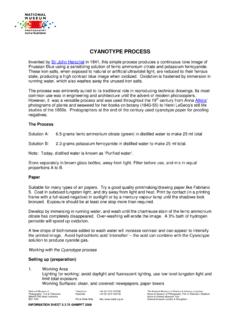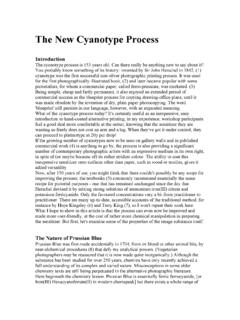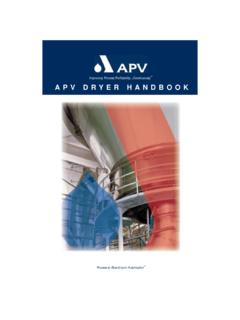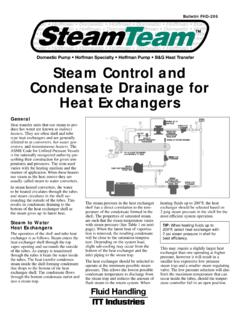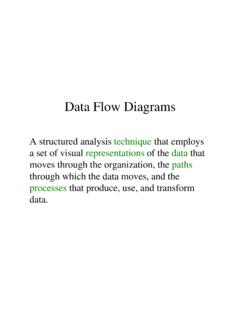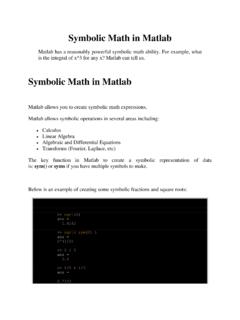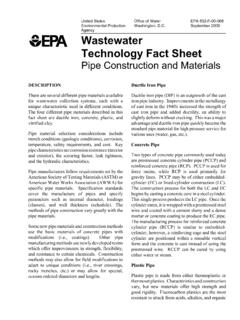Transcription of APV Evaporator Hndbook
1 FOURTH EDITIONEHB-599An Invensys companyAPV Evaporator Hndbook 12/6/00 11:13 AM Page 692 CONTENTSI ntroduction .. Type Selection ..20 Configurations For Energy Conservation ..24 Residence Time In Film Evaporation ..28 Designing For Energy Properties ..34 Mechanical Vapor Recompression Evaporators ..36 Evaporators For Industrial And Chemical Applications ..42 Waste Water Evaporators ..47 Tubular Evaporators For Sanitary Standards ..50 Evaporator Control ..52 Preassembled Production Of High Quality Juice Concentrates ..55 Engineering Conversions ..60 Properties Of Saturated Steam Temperature Tables ..61 APV Evaporator Hndbook 12/6/00 11:07 AM Page 23 INTRODUCTIONAs one of the most energy intensive processes used in the dairy, food andchemical industries, it is essential that evaporation be approached from theviewpoint of economical energy utilization as well as process effectiveness.
2 Thiscan be done only if the equipment manufacturer is able to offer a full selection ofevaporation technology and systems developed to accommodate various productcharacteristics, the percent of concentration required, and regional energy Handbook describes the many types of evaporators and operating optionsavailable through the experience and manufacturing capabilities of companieswithin the APV Evaporator Hndbook 12/6/00 11:07 AM Page 3 EVAPORATORSTYPES AND DESIGNIn the evaporation process, concentration of a product is accomplished by boilingout a solvent, generally water. The recovered end product should have anoptimum solids content consistent with desired product quality and operatingeconomics.
3 It is a unit operation that is used extensively in processing foods,chemicals, pharmaceuticals, fruit juices, dairy products, paper and pulp, and bothmalt and grain beverages. Also it is a unit operation which, with the possibleexception of distillation, is the most energy the design criteria for evaporators are the same regardless of the industryinvolved, two questions always exist: is this equipment best suited for the duty, andis the equipment arranged for the most efficient and economical use? As a result,many types of evaporators and many variations in processing techniques havebeen developed to take into account different product characteristics andoperating OF EVAPORATORSThe more common types of evaporators include:nBatch pannForced circulationnNatural circulationnWiped filmnRising film tubularnPlate equivalents ofnFalling film tubulartubular evaporatorsnRising/falling film tubular4 APV Evaporator Hndbook 12/6/00 11:07 AM Page 45 BATCH PANNext to natural solar evaporation, the batch pan (Figure 1)is one of the oldestmethods of concentration.
4 It is somewhat outdated in today's technology , but is stillused in a few limited applications, such as the concentration of jams and jellieswhere whole fruit is present and in processing some pharmaceutical products. Up until the early 1960's, batch pan also enjoyed wide use in the concentrationof corn a batch pan Evaporator , product residence time normally is many , it is essential to boil at low temperatures and high vacuum when aheat sensitive or thermodegradable product is involved. The batch pan is eitherjacketed or has internal coils or heaters. Heat transfer areas normally are quitesmall due to vessel shapes, and heat transfer coefficients (HTC s) tend to be lowunder natural convection conditions.
5 Low surface areas together with low HTC'sgenerally limit the evaporation capacity of such a system. Heat transfer isimproved by agitation within the vessel. In many cases, large temperaturedifferences cannot be used for fear of rapid fouling of the heat transfer low evaporation capacities, therefore, limit its 1 APV Evaporator Hndbook 12/6/00 11:07 AM Page 5 TUBULAREVAPORATORSNATURAL CIRCULATIONE vaporation by natural circulation isachieved through the use of ashort tube bundle within thebatch pan or by having an externalshell and tube heater outside of themain vessel (Figure 2).The external heater has the advantagethat its size is not dependent upon thesize or shape of the vessel itself.
6 As aresult, larger evaporation capacitiesmay be obtained. The most commonapplication for this type of unit is as a reboiler at the base of a distillation FILM TUBULARC onsidered to be the first 'modern' Evaporator used in the industry, the rising filmunit dates back to the early 1900's. The rising film principle was developedcommercially by using a vertical tube with steam condensing on its outside surface(Figure 3). Liquid on the inside of the tube is brought to a boil, with the vaporgenerated forming a core in the center of the tube. As the fluid moves up the tube,more vapor is formed resulting in a higher central core velocity that forces theremaining liquid to the tube wall.
7 Higher vapor velocities, in turn, result in thinnerand more rapidly moving liquid film. This provideshigher HTC's and shorter product residence development of the rising film principle was a giant step forward in the evaporation field, particularly in product addition, higher HTC's resulted in reduced heattransfer area requirementsand consequently, in a lowerinitial capital CONDENSEROR VACUUMFEEDPRODUCTOUTF igure 2TO CONDENSEROR VACUUMFEEDCONDENSATESTEAMPRODUCTOUTF igure 3 APV Evaporator Hndbook 12/6/00 11:07 AM Page 67 FALLING FILM TUBULARF ollowing development of the rising film principle, it took almost half a century fora falling film evaporation technique to be perfected (Figure 4).
8 The main problemwas how to design an adequate system for the even distribution of liquid to eachof the tubes. For the rising film Evaporator , distribution was easy since the bottombonnet of the calandria was always pumped full of liquid, thus allowing equalflow to each each manufacturer has its own technique, falling film distribution generally isbased around use of a perforated plate positioned above the top tube plate of thecalandria. Spreading of liquid to each tube is sometimes further enhanced bygenerating flash vapor at this point. The falling film Evaporator does have theadvantage that the film is 'going with gravity' instead of against it. This results in a thinner, faster moving film and gives rise to an even shorter product contact timeand a further improvement in the value of establish a well-developed film, the rising film unit requires a driving film force,typically a temperature difference of at least 25 F (14 C) across the heatingsurface.
9 In contrast, the falling film Evaporator does not have a driving forcelimitation permitting a greater number of Evaporator effects to be used within thesame overall operating limits. Forexample, if steam is available at220 F (104 C), then the last effectboiling temperature is 120 F(49 C); the total available T is equal to 100 F (55 C).In this scenario a rising filmevaporator would be limitedto four effects, each with a Tof 25 F (14 C). However,using the falling filmtechnique, it is feasible to haveas many as 10 or more 4 APV Evaporator Hndbook 12/6/00 11:07 AM Page 78 RISING/FALLING FILM TUBULARThe rising/falling film Evaporator (Figure 5) has the advantagesof the ease of liquid distributionof the rising film unit coupledwith lower head roomrequirements.
10 The tube bundleis approximately half the heightof either a rising or falling filmevaporator, and thevapor/liquid separator ispositioned at the bottom ofthe CIRCULATIONThe forced circulation Evaporator (Figure 6)was developed for processing liquorswhich are susceptible to scaling or crystallizing. Liquid is circulated at a high ratethrough the heat exchanger, boiling being prevented within the unit by virtue of ahydrostatic head maintained above the top tube plate. As the liquid enters theseparator where the absolute pressure is slightly less than in the tube bundle, theliquid flashes to form a main applications for a forced circulation Evaporator are in the concentrationof inversely soluble materials, crystallizing duties, and in the concentration ofthermally degradable materials which result in the deposition of solids.
